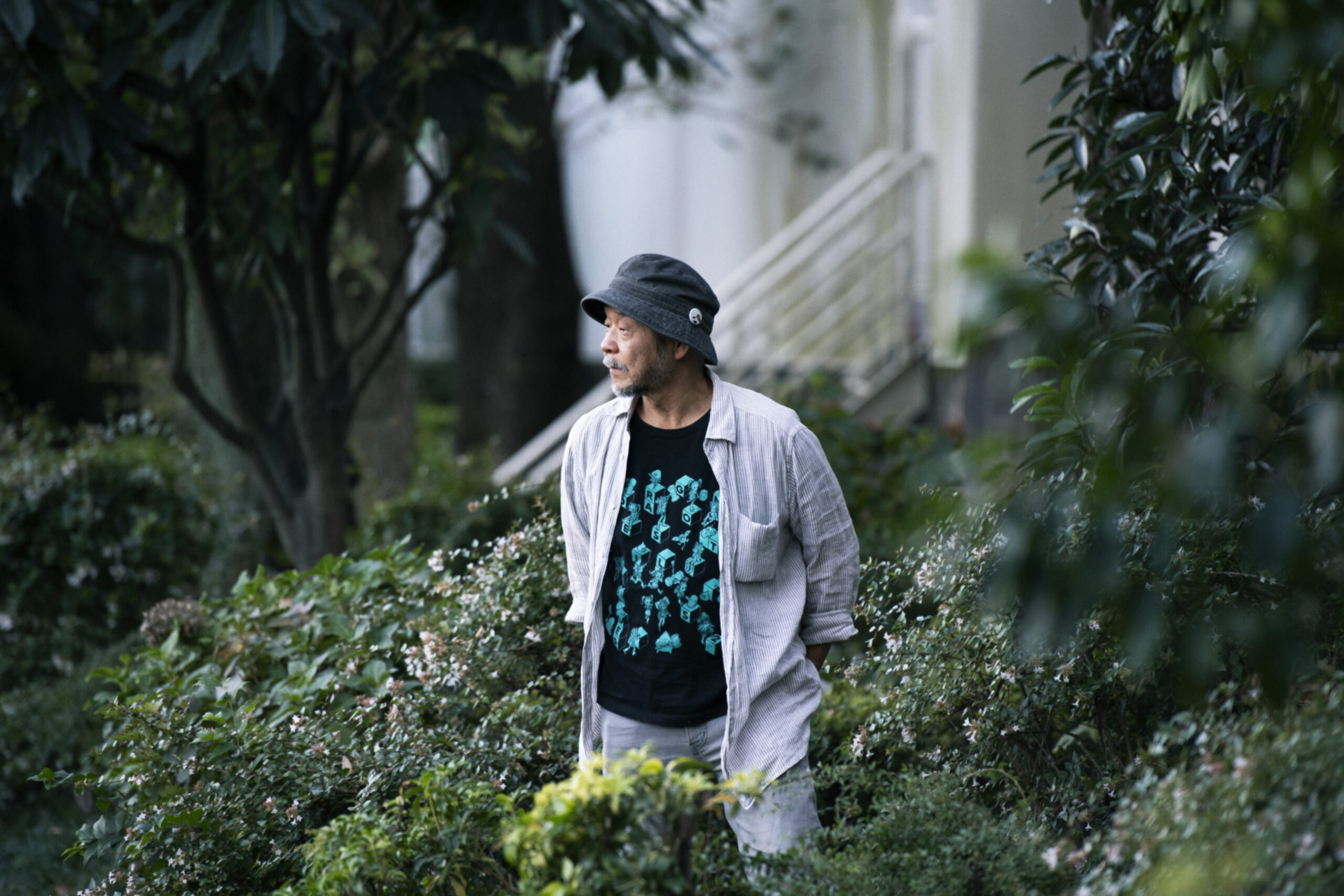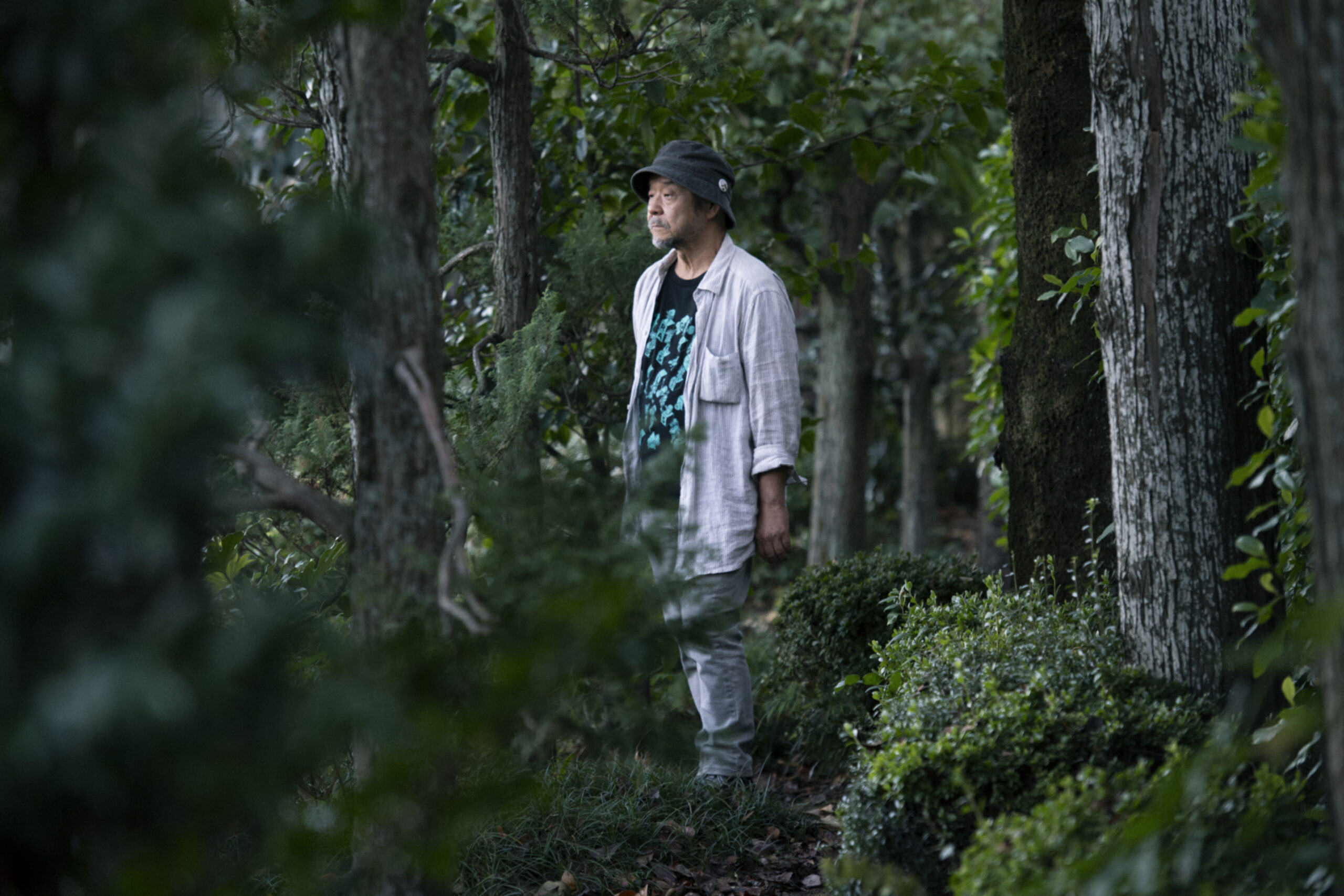
Mamoru Oshii’s Drive to Increase Information and Immersion: The Aims of the First Film Adaptation of “Ghost in the Shell” #03
Text: Satoshi Asahara / Photo: Taro HiranoManga author Shirow Masamune’s The Ghost in the Shell began serialization in 1989. Its first adaptation to picture came in 1995 with the theatrical film of the same name, directed by Mamoru Oshii. Well-received within Japan and abroad, the film and its sequel (Innocence) would go on to influence many other creators. For this interview, we speak with the pioneering artist on why they felt suited to create the film adaptation. We hear about production struggles, the little known background behind famous scenes, and about the work that went into bringing the Ghost in the Shell world to life through animation.
#03 Depicting Humanity Through Cyborgs
-Did you ever get input from the original creator, Shirow Masamune when you were producing Ghost in the Shell and Innocence?
Mamoru Oshii (“Oshii”): Generally, no. When I went to meet him before making the movie, he essentially said “do whatever you like.” He didn’t have any concrete requirements about content. I don’t think Shirow wants to be the face of anything, and to this day I have only spoken with him a few times.

-When I interviewed Shirow for this media outlet, he said that of all the animation made from Ghost in the Shell, he had watched Innocence the most. Did you ever plan to ask him directly about his reactions to anything?
Oshii: I’ve never asked him myself, and I’ve never heard him voice his opinions through anyone else either. I’ve worked with a dozen or so manga creators so far, and some have had complaints. I’ve even fought with some, but no one else is as totally distant from the outside world as Shirow. But if he does like Innocence, then I feel like I can kind of understand why. I suspect it’s because it best retains the atmosphere and spirit of the original.
-Compared with Ghost in the Shell, Innocence seems to address more philosophical themes in relation to cyborgs.
Oshii: I’ve always liked cyborgs, and think they’re the most fascinating way to express what humanity is. It’s hard to explore the essence of human nature using humans, and robots make for another kind of story. A lot of drama centers on introducing a human that’s unusual in some way, and portraying the strife and emotional conflicts that ensue. Personally, I feel like that doesn’t connect to portraying humanity. I also don’t think movies are really suited to that kind of expression, so I’ve never done an art film. I always end up doing sci-fi.

-Of all the characters in Public Security Section 9, are you fond of Batou? He could be taken as the hero of Innocence.
Oshii: I like old man characters, so unsurprisingly, I’m a fan. But recently, in both anime and live action, I’ve found it really hard to focus on the men over the women. I feel like I’m finally turning into an old man. *Laughs*
-Several times you’ve mentioned time and budget issues with Ghost in the Shell. In comparison, were things any different for Innocence?
Oshii: That was during an economic bubble, so we were given plenty of time and money.
On the other hand, for some people it was hell. The more you draw, the more you can see how you can improve by drawing more. and there was time and money to do everything over again. In the end, that meant everyone was aiming for better and better to the extent that time would allow. Thinking back on it, CG was expensive and we didn’t have time or money for Ghost in the Shell, so we ended up designing things like background billboards on computers, then printing them out and gluing it into frames. People say it was a precursor to digital animation, but it was really a product of manual work. We only used CG and compositing for around 60 cuts, I’d say. We only used CG for two cuts involving the thermoptic camouflage, and we did all the rain with cel scuffing and filters. It’s the ultimate analogue animation. *Laughs*
-What’s your stance on directing your staff during production?
Oshii: I was exhausted by the preparations, for Ghost in the Shell, but there was almost nothing for me to do during production. I had so much free time that I’d even go out and get lunch bentos for the team. I was back to all-nighters in the studio again once we got started on audio, though.
Some of the team didn’t know that, and thought I was skipping work. So when I went back into the office on an errand, they had taken my desk away. They got me that time. But anyway, we only got into the audio and script for the movie once the scenes were 95% animated. I’m a bit proud of that.
-Nowadays, it’s accepted that the voice actors will get to work before there’s any finished animation. Did you lead the voice actor casting, too?
Oshii: I first learned of Atsuko Tanaka, who played Motoko, when someone else who knew more about voice actors recommended her. She was still starting her career at the time and didn’t have a long list of credits, so I remember it feeling like a bit of a gamble. Motoko is a human but not fully human, so it’s a difficult role. She’s almost fully expressionless, and almost all her lines are fairly aggressive, so you’d have to be used to giving orders to play her. But Atsuko has a fairly hard tone to her voice, and a unique and unusual tone that helps her fit will as Motoko. I couldn’t imagine any other voice than hers for Motoko. I feel like the rest of the casting went smoothly as well. And even at that time, Akio Otsuka was the only voice actor whose name came to mind when it came to actors suited to play older men like Batou.

-I think his role as Batou actually won Otsuka a lot of fans.
Oshii: It might have. I feel like Otsuka’s biggest role with the general public is Snake from the Metal Gear series. The target audience for it is so much larger, and he has several hundred times as many lines as Batou does as well. Koichi Yamadera, who played Togusa, can manage any role, and I was confident he could handle a witty character. But some people called for a recast before we got to work on Innocence. The proposal was to use more famous actors to draw attention, but I firmly refused. Anyone would be fine for single-appearance characters, but we couldn’t change the main cast under any circumstances. Character designs actually change frequently in anime. The dramatic way to put it is that there are slight differences whenever we cut away from or to anything.
So it’s the voice actors who create the characters’ personas. You can’t just change them.
-And finally, could you tell us about any particularly memorable scenes for you, out of the various versions of Ghost in the Shell you’ve worked on?
Oshii: Maybe the scene where Motoko is disintegrating atop the tank in the original Ghost in the Shell. I feel like that scene represents the totality of Ghost in the Shell, and it’s my favorite, too. For another, there’s the scene in Innocence where the doll falls on the floor. I was amazed by how Okiura pulled that off. He’s the only animator who can pull off that kind of artwork. I sincerely endorse Okiura as an animator, and will leave it at “no comment” about him as a person. We fight when we see each other face to face, so we’ve both suppressed the memories of what the other looks like. *Laugh* I doubt we’d even notice if we passed each other in the hallway.

(End)
Mamoru Oshii
Born August 8, 1951. A native of Tokyo. Graduated from the Tokyo Gakugei University Faculty of Education. Began working at Tatsunoko Production in 1977. Went on to work at Studio Pierrot (now known as Pierrot) before becoming self-employed. Major directorial works include Urusei Yatsura: Only You, Angel’s Egg, and Patlabor: The Movie, among others. The film Ghost in the Shell reached the number one spot in the US magazine Billboard’s Cell/Video category. Innocence was shown for the Cannes International Film Festival’s competitive division.

